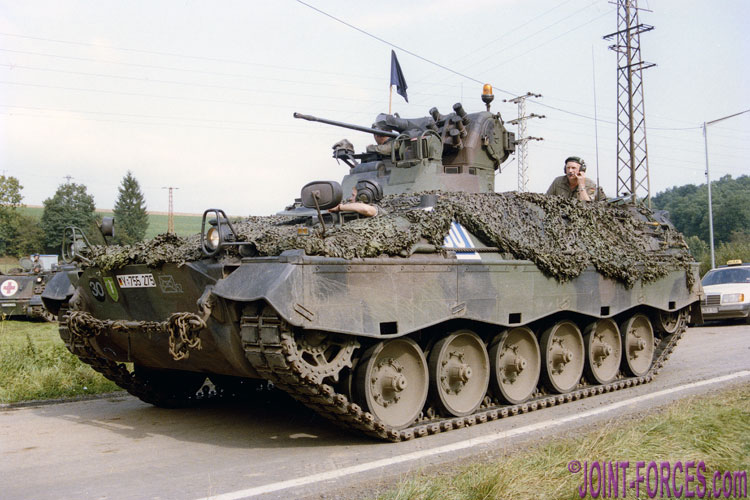Since its official introduction in 1971, the Schützenpanzer MARDER 1 AIFV (Armoured Infantry Fighting Vehicle) has been the main weapon system of Germany’s Panzer Grenadiers, reports Carl Schulze.
Carl Schulze reports: The Panzergrenadiertruppe is the armoured infantry force of the Bundeswehr. Currently the vehicle is being replaced by the Schützenpanzer PUMA, but the ordered 342 vehicles, of which about 50% have been delivered, will not be enough to equip all eleven armoured infantry battalions of the German Army.
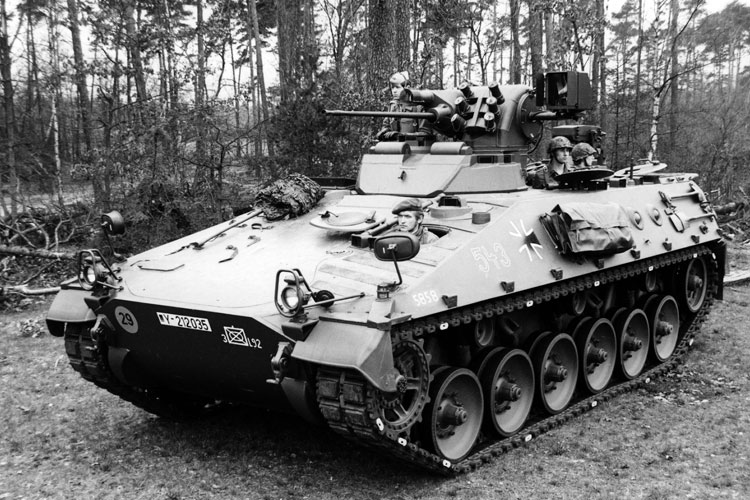
Between 1971 and 1975 a total of 2,136 Schützenpanzer Marder entered service with German Army – the first series production vehicles were issued to Panzer Grenadier Lehr Bataillon 92 [© Bundeswehr]
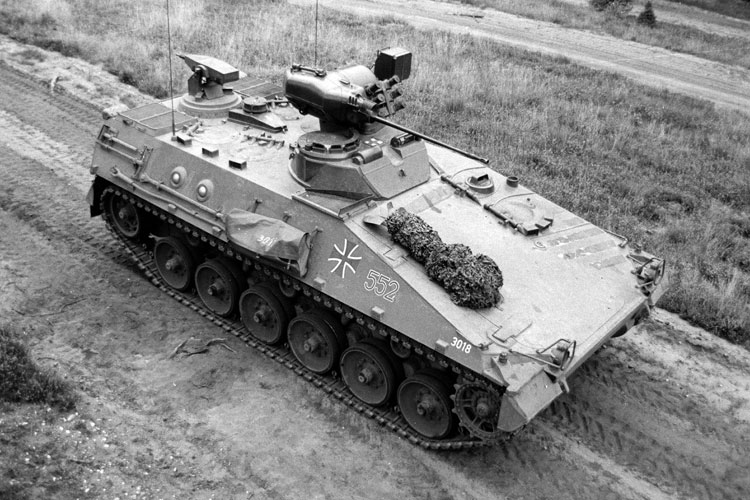
Originally the armament of the Marder 1 consisted of a 20mm MK 20 Rh 202 DM 6 Maschinenkanone, a coaxial 7.62mm MG3 and a 7.62mm MG3 mounted in the weapon station at the rear [© Bundeswehr]
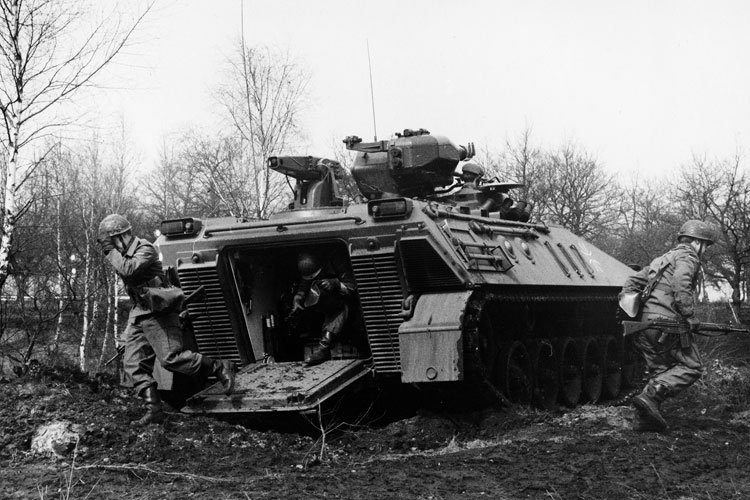
Panzer Grenadiers dismount from a Schützenpanzer Marder 1 – initially, the crew of the vehicle consisted of the vehicle commander, gunner, driver and seven dismounts [© Bundeswehr]
Schützenpanzer MARDER 1 Predecessors
The direct predecessor of the Schützenpanzer MARDER 1 was the Schützenpanzer (lang) HS 30 that entered service from 1959 onwards. Fitted with the 20mm HS 820 L/85 Maschinenkanone (automatic cannon) it was designed by the Swiss company Hispano-Suiza. Series production was undertaken by Leyland in the United Kingdom and by Rheinstahl-Hanomag and the Henschel-Werke GmbH in Germany.
The vehicle’s crew consisted of the driver, gunner, vehicle commander and five dismounts. This vehicle only partly fulfilled the requirements of the Panzergrenadiertruppe, with troops having to dismount over the vehicle’s sides, a technique already considered obsolete in World War Two. It was underpowered, could not follow MBTs in battle, was technically unreliable and lacked any kind of NBC protection system.
Schützenpanzer (Neu)
Requirements for a successor of the HS 30 were already established before the vehicle entered operational service. The so-called Schützenpanzer (Neu) was required to fight alongside the new MBT that was under development and that was later fielded under the designation Leopard 1.
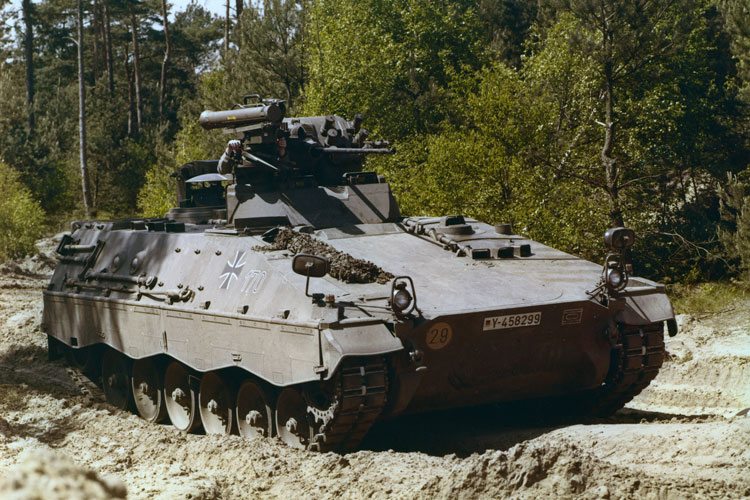
Between 1977 and 1979 all Schützenpanzer Marder 1 were upgrade by fitting them with the MILAN anti-tank guided missile system – seen here on the right side of the turret [© Bundeswehr]
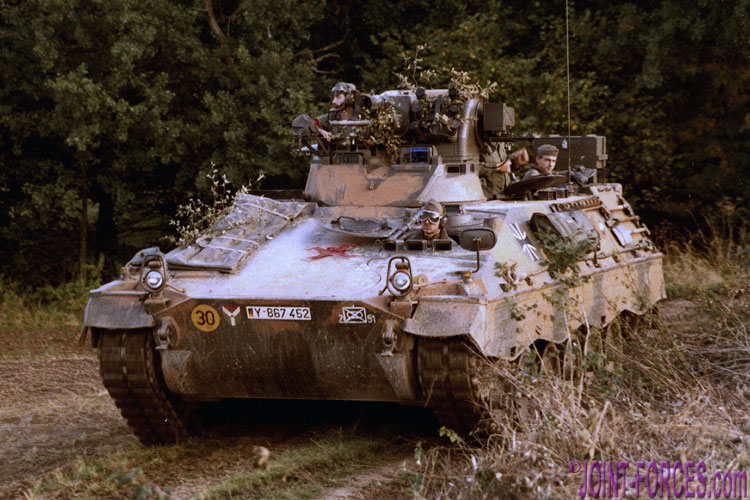
The Schützenpanzer Marder 1 A1(+) featured the PERI Z59/PERI Z16 Passiven Nachtsicht- und Beobachtungsgerät image-intensifying system [© Lindenberg †]
In the mid-1980s, the Bundeswehr launched a first attempt to develop a successor for the Schützenpanzer MARDER. This vehicle was given the designation Schützenpanzer MARDER 2 and, as a result, the original nomenclature of the original MARDER was changed to Schützenpanzer MARDER 1. In 1992, development of the MARDER 2 was terminated.
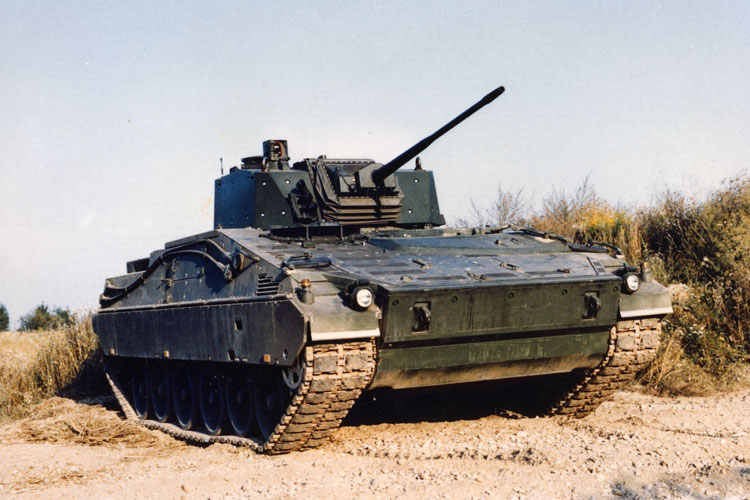
Two prototypes of Schützenpanzer Marder 2 were built before termination of its development. The vehicle was armed with an Rh 503 35mm/50mm automatic cannon and a coaxial 7.62mm MG3. It weighed 44,200kg and had a crew of ten [© Krauss-Maffei Wegmann GmbH & Co. KG]
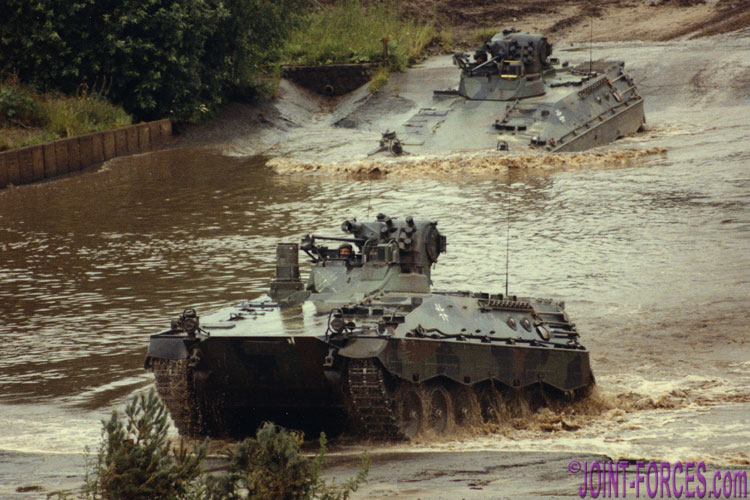
Schützenpanzer Marder 1 A2s negotiate a water obstacle – in total, 1,462 vehicle were upgraded to A2 standard by installation of the Wärmebildgerät WBG X thermal imaging system [© Michael Jerchel †]
To allow for stowage of the missile system and four missiles inside the vehicle, one dismount seat was removed. From then on, the AIFV’s crew consisted of only nine soldiers; driver, vehicle commander, gunner and six dismounts. Between 1979 and 1982, a total of 1,024 vehicles were modified to Schützenpanzer MARDER 1 A1 standard, 674 1 A1(+) and 350 1 A1(-), plus another 1,112 were brought to MARDER 1 A1A standard.
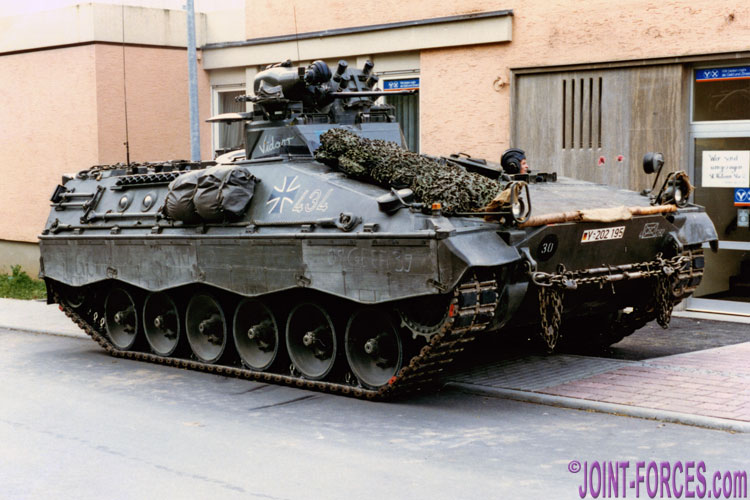
Schützenpanzer Marder 1 A1A2 of Panzergrenadierbataillon 282 seen during the REFORGER [©(Return of Forces to Germany) 1988 Exercise CERTAIN CHALLENGE [© Benno Knorr]
Furthermore, Schützenpanzer MARDER 1 A1(+) were fitted with the PERI Z59/PERI Z16 Passives Nachtsicht- und Beobachtungsgerät or PNZBG (passive image-intensifying observation and sighting system) plus a heat detection sensor system. Previously mounted infrared (IR) night-fighting equipment was also retained.
Schützenpanzer MARDER 1 A1A2 and 1 A2
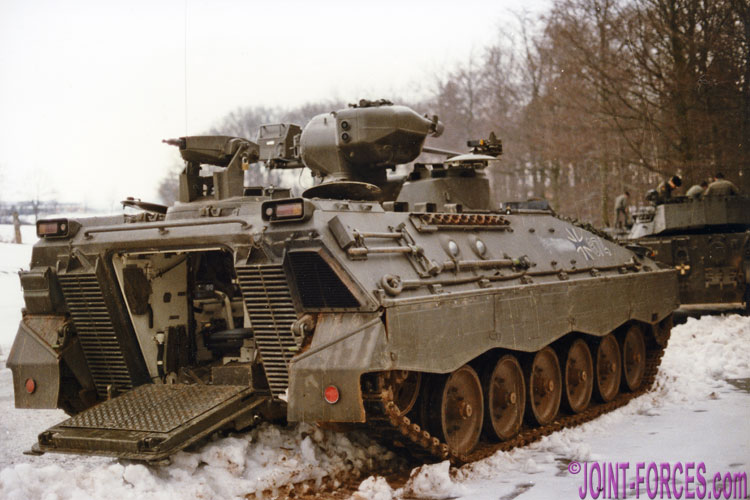
The Marder 1 A1(+) and 1 A1(-) both featured a new dual-feed system for the 20mm MK 20 – this [©A1(+) also featured the PERI Z59/PERI Z16 PNZBG passive image-intensifying observation and sighting system [© Thomas Laber †]
In the case of MARDER 1 A1(-) and MARDER 1 A1A, the Wärmebildgerät WBG X thermal-imaging system was additionally installed to improve their night-fighting capabilities. The 1,462 vehicles fitted with the WBG X were given the designation Schützenpanzer MARDER 1 A2.
Some 36 AIFVs were converted into Fahrschulpanzer MARDER 1 A2 driver-training vehicles. As part of the modification their turrets were exchanged for special cabins for the driving instructor, and an override system and ballast ring were incorporated.
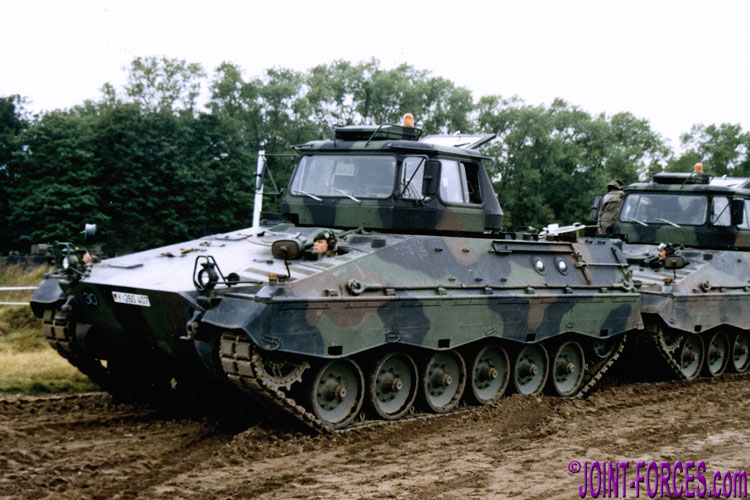
For driver-training purposes 36 Schützenpanzer Marder 1 A2 AIFVs were converted into Fahrschulpanzer Marder driver-training vehicles [© Benno Knorr]
In the second half of the 1980s, the Bundeswehr introduced a new generation of tactical radios; the A/VHF SEM70/80/90 family replacing the VHF SEM25/35 family. Fielding was done division by division. Installation of the new radios in the Schützenpanzer MARDER 1 variants resulted in a series of new designations. A1s fitted with the new radios became A1A3, A1A became A1A4 and A1A2 became A1A5. A2s fitted with the new radios were designated A2A1.
Article © Carl Schulze 2018
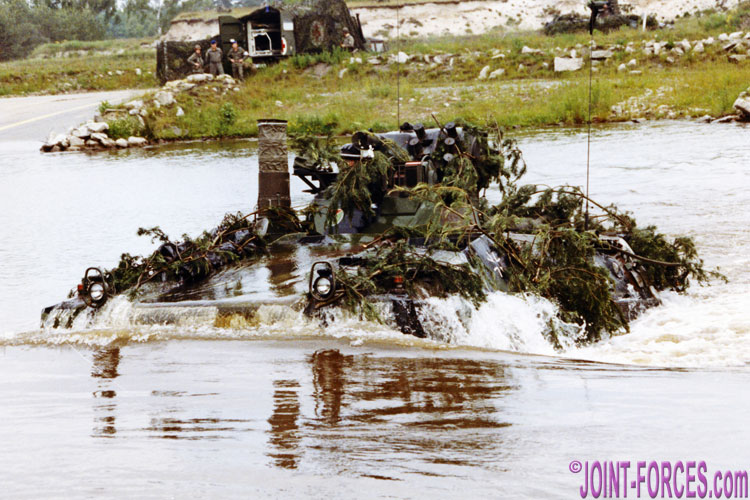
A Schützenpanzer Marder 1 A2 negotiates a water obstacle – note that the vehicle is fitted with the deep fording kit [© Michael Jerchel †]
To be continued…..


